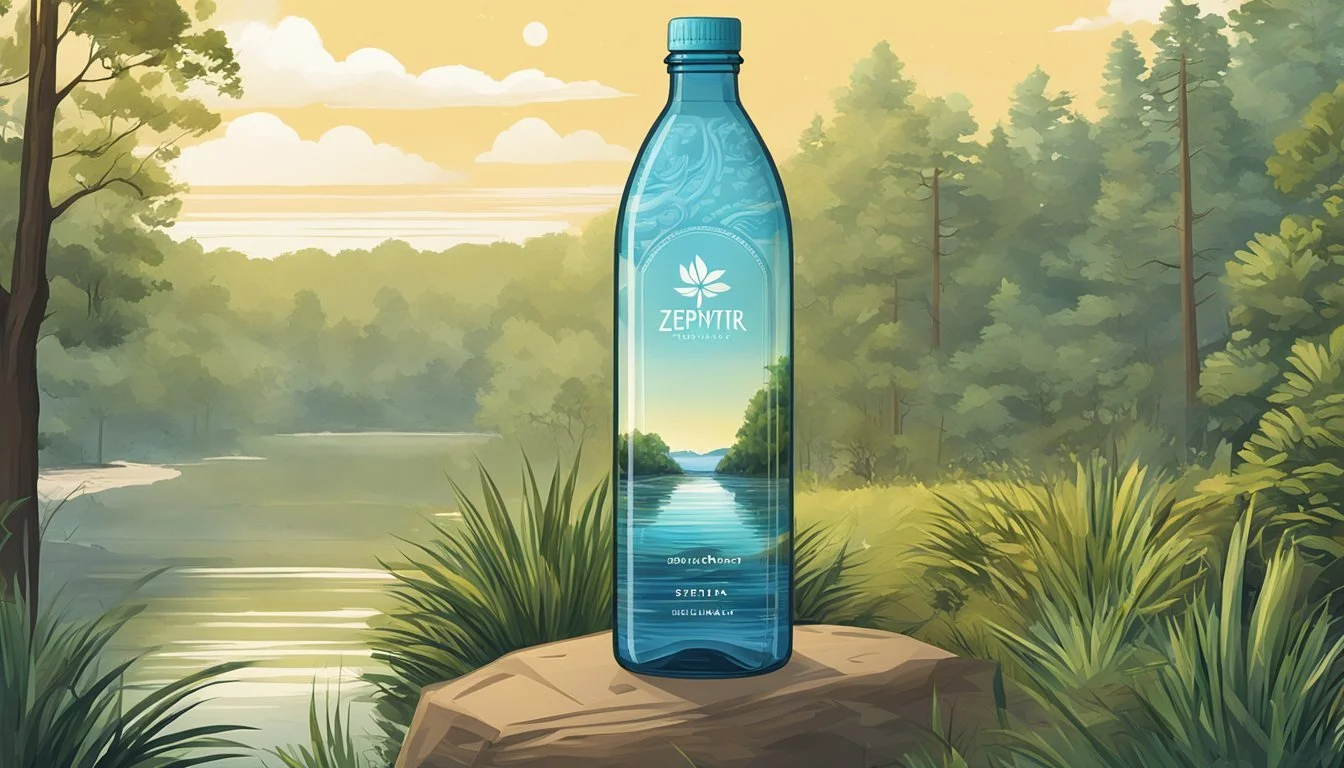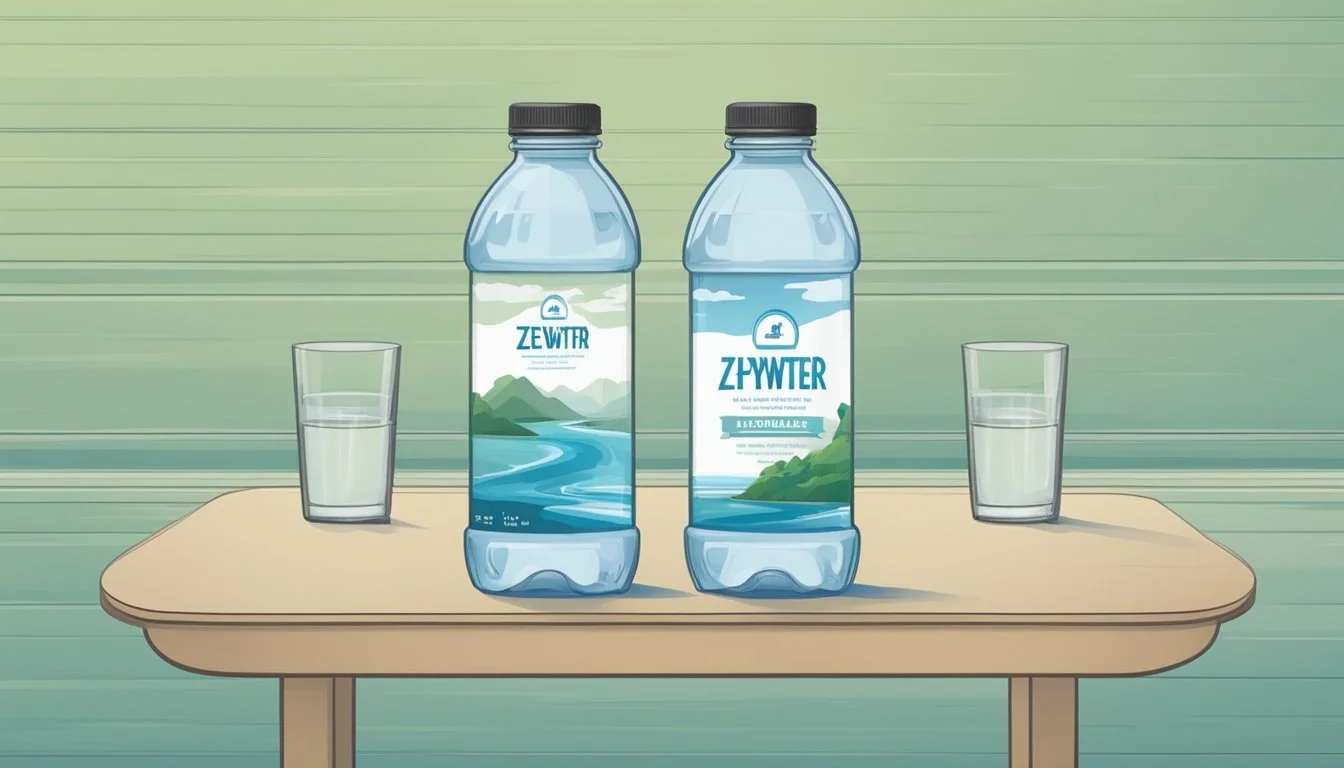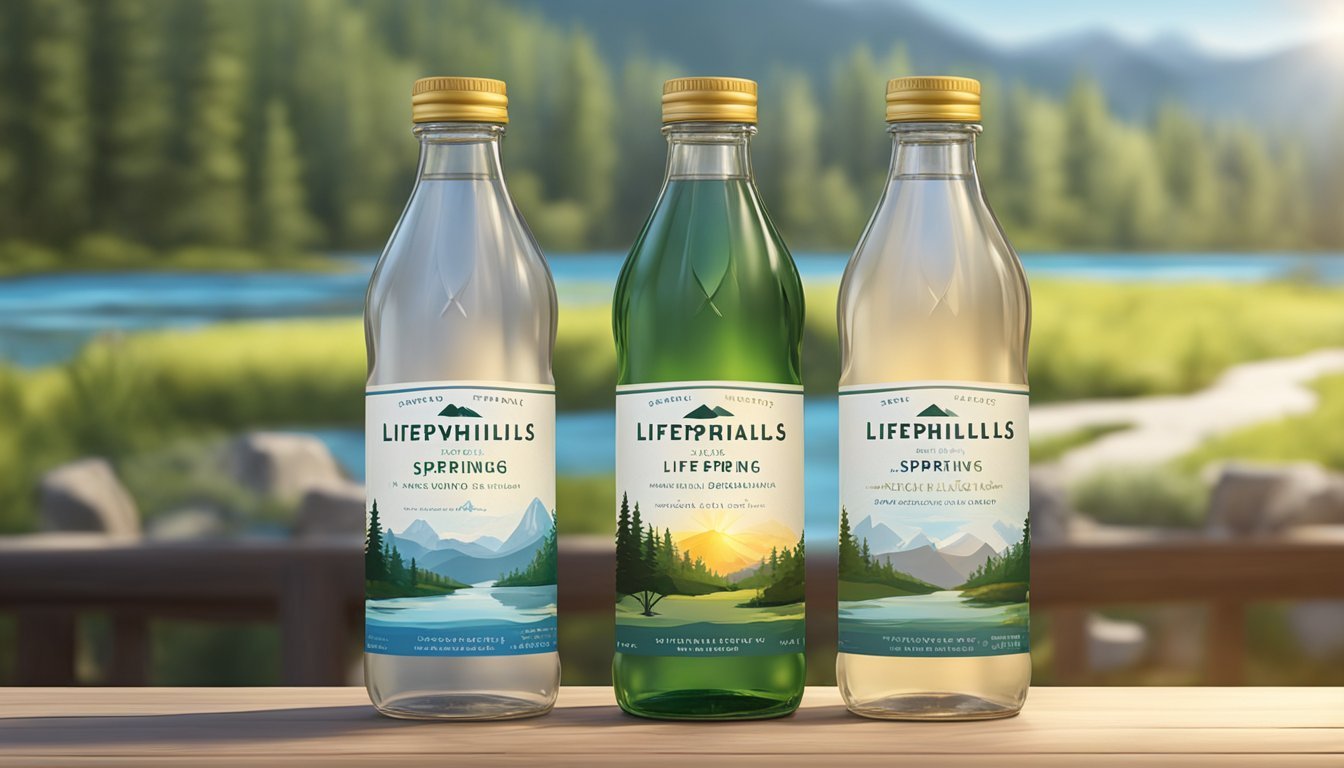LIFEWTR vs. Zephyrhills
A Comparative Analysis of Bottled Water Brands
In the search for hydration, consumers are often faced with a plethora of choices, each brand offering its distinct taste and purported health benefits. Among these, LIFEWTR and Zephyrhills represent two notable options in the bottled water market. LIFEWTR, known for its artistically designed bottles, markets itself as a premium source of hydration that is pH-balanced with electrolytes added for taste. Zephyrhills, on the other hand, sources its water from Florida’s natural springs, boasting a naturally refreshing taste that reflects its regional origins.
The debate over which water is better is not just about taste preference but also encompasses factors such as source, production process, and the presence of added minerals or electrolytes. LIFEWTR's appeal stems from its purified water that is enhanced with electrolytes, targeting an audience looking for functional benefits in their water consumption. Zephyrhills emphasizes its local sourcing and natural filtration process, catering to those who prefer spring water with minimal intervention.
Selecting the superior bottled water brand depends on individual priorities, whether they lay in the enhancement of the water for optimized hydration, the origin of the water, or even the commitment of the brand to sustainability practices. As consumers weigh these factors, they contribute to the broader conversation regarding the environmental impact and health implications of choosing bottled water over tap water options.
Overview of Bottled Water Industry
The bottled water industry is marked by an increasing consumer demand and a competitive landscape with a diverse range of products. Significant growth in this sector reflects shifting preferences and a focus on health.
Evolution of Bottled Water Consumption
Initially, bottled water was a luxury product, but it has now become a staple commodity in many households across the world. Concerns over the safety of tap water and an increasing emphasis on health and wellness have fueled the expansion of the bottled water market. Companies like Nestlé, Coca-Cola, and PepsiCo have played pivotal roles in developing and diversifying this market. For instance, stark growth figures are evident with the global bottled water market size being estimated at USD 303.95 billion in 2022 and a projected compound annual growth rate (CAGR) of 5.9% from 2023 to 2030.
Bottled Water Brands Landscape
The bottled water industry encompasses a wide spectrum of brands, each with different selling propositions. Consumers are now presented with choices ranging from purified, spring, and mineral water to enhanced or flavored varieties. Major players, like Nestlé, offering brands like Poland Spring and Pure Life, dominate on a global scale, while PepsiCo's entry with LIFEWTR targets the premium segment. Coca-Cola competes with its brand Dasani. Price points and positioning vary, with some brands such as Zephyrhills appealing to regional preferences and focusing on natural spring sources. Premiumization has also seen companies emphasizing packaging and unique selling propositions to capture market share and offer high-margin products, as seen with LIFEWTR's pricing strategy.
LIFEWTR vs. Zephyrhills: Brand Profiles
In comparing LIFEWTR and Zephyrhills, one represents a modern brand emphasizing creativity and pH-balanced water, while the other has deep roots in natural spring water sources.
LIFEWTR: Brand Philosophy and Products
LIFEWTR is a contemporary brand launched by PepsiCo characterized by its focus on design and art. Its bottled water is not only purified and pH-balanced but also enhanced with electrolytes for taste. The brand uniquely showcases its commitment to creativity by featuring rotating bottle designs created by emerging artists. This initiative underscores the brand’s dedication to advancing creative sources and offering consumers inspiration along with hydration.
Product Highlights:
Purified water
pH-balanced
Electrolytes for taste
Artist-designed labels
Zephyrhills: Brand History and Offerings
Zephyrhills, on the other hand, boasts a longstanding history as a natural spring water brand sourced from springs in Florida. Owned by Nestlé Waters North America, Zephyrhills is recognized for providing natural and crisp-tasting spring water to its consumers. Its catalog features a variety of products, such as sparkling water and flavored water, alongside its core offering of natural spring water.
Brand Origins: Originating from Florida, known for its abundant natural springs
Product Range:
Natural spring water
Sparkling water
Flavored water options
Health and Safety Analysis
In comparing LIFEWTR and Zephyrhills, one must consider the hydration benefits and safety concerns, including contaminants and regulation compliance.
Health Benefits of Hydration
Proper hydration is essential for maintaining health, and both LIFEWTR and Zephyrhills provide this crucial benefit. LIFEWTR is enhanced with electrolytes like magnesium sulfate and potassium bicarbonate for taste and hydration efficiency. Zephyrhills, a natural spring water, offers hydration with naturally occurring minerals.
Contaminants and Safety Concerns
When analyzing safety, the Environmental Protection Agency (EPA) and the Food and Drug Administration (FDA) have set limits for contaminants like arsenic and PFAS chemicals, which can negatively impact health. LIFEWTR is purified water, meeting rigorous safety standards. Zephyrhills is sourced from springs and is also subject to stringent testing to ensure safety.
Arsenic Levels: Must be below EPA threshold of 10 parts per billion (ppb).
PFAS Chemicals: Often found in various water sources, their presence in bottled water brands should adhere to the latest FDA guidelines.
BPA: Both brands use BPA-free packaging to prevent chemical leaching and ensure the safety of the water.
No significant levels of harmful contaminants have been reported in these brands, and they comply with federal safety standards, providing safe and healthy hydration options.
Water Quality and Composition
Evaluating the water quality and composition of LIFEWTR and Zephyrhills bottled waters involves a close look at mineral content, pH levels, and electrolyte presence. These factors contribute to the overall taste, nutritional value, and potential health benefits.
Mineral Content Comparison
LIFEWTR prides itself on being a premium bottled water that includes a balance of electrolytes and is purified. It does not specifically highlight a unique mineral content, as its focus is on pH balance and the addition of electrolytes for taste. Zephyrhills, sourced from Florida springs, naturally contains a range of minerals. The mineral composition can include elements such as calcium and potassium, which are beneficial for hydration and overall health.
PH Levels and Alkalinity
LIFEWTR is known for its alkaline pH level, typically around 7.4, which is close to the body's natural pH. This makes it fall into the category of alkaline waters. Zephyrhills, however, typically presents a pH level that is within the range of natural spring water, which can fluctuate but generally remains close to neutral.
Presence of Electrolytes
Electrolytes are crucial for maintaining hydration and balancing fluids in the body. LIFEWTR adds electrolytes to enhance the taste and to provide a functional benefit to consumers. They specifically include magnesium sulfate, potassium bicarbonate, and purified by reverse osmosis, aiming to create a clean, pure taste. Zephyrhills does not add electrolytes to its water, as the electrolytes present are inherent from the spring source it is drawn from, offering a natural mineral balance.
Source and Purification Processes
Selecting between LIFEWTR and Zephyrhills water brands involves understanding their sourcing and purification methods. These factors are crucial for water quality and taste.
Spring Water vs. Purified Water
Spring water refers to water that comes from a natural spring, typically containing varying minerals and is often revered for its taste and natural filtration. Purified water, however, is usually sourced from groundwater or tap water and goes through a purification process such as reverse osmosis to remove impurities.
Specifics of LIFEWTR and Zephyrhills Sources
LIFEWTR is a brand that focuses on purified water. Their water source can come from various places, including municipal supplies. They then implement a rigorous purification method which includes reverse osmosis.
Zephyrhills, on the other hand, is known for its natural spring water. Their catchment areas are springs in Florida, and their water is classified as mountain spring water, reflecting its origin from natural, protected springs.
Water Treatment and Purification Techniques
Both brands aim for high purity and quality, but their purification processes diverge significantly. LIFEWTR employs a multi-step purification process which includes:
Ultrafiltration
Reverse osmosis
Ultraviolet exposure
Addition of electrolytes for taste
Zephyrhills utilizes natural filtration that occurs as the water percolates through rock. They ensure safety with additional steps such as:
Ozonation
Microfiltration
Mineral addition for consistent taste
LIFEWTR further enhances its products with a proprietary electrolyte blend and refers to its filtration process as Hydro-7, highlighting the seven-step purification process designed to remove impurities while preserving quality.
Taste and Flavor Profiles
In the world of bottled water, taste and flavor profiles are heavily influenced by the source and the purification processes. Consumers react differently to various brands, often swaying their preferences based on their taste experience and the subtleties of flavor imparted by the minerals.
Taste Test Results and Consumer Feedback
Consumers often report LIFEWTR as having a crisp taste, reflecting its purified nature and enhanced with electrolytes for taste. Feedback from taste tests suggest a neutral palate, with no overpowering mineral flavor, making it a refreshing choice for those who prefer water that doesn't deviate far from the taste of pure H2O.
Zephyrhills, sourced from springs in Florida, has been described as having a fresh and clean taste with a slight mineral undertone that is characteristic of natural spring waters. It tends to score well in blind taste tests, particularly with consumers who favor a natural hint of earthiness in their water.
Influence of Minerals and Filtration on Flavor
The flavor of bottled water is significantly affected by its mineral content, which varies depending on the water's source. LIFEWTR undergoes a purification process that includes reverse osmosis, stripping it of most natural minerals, resulting in a very pure flavor profile. They then add electrolytes back into the water, which can subtly affect taste but primarily serve to enhance the water's hydrating qualities.
Zephyrhills, being natural spring water, contains minerals like calcium, magnesium, and potassium that are inherent to its source. These minerals can impart a perceptible yet pleasant flavor that may be described as fresh with a trace of sweetness. It's this mineral flavor that often distinguishes spring waters like Zephyrhills from purified waters.
Packaging and Environmental Impact
In comparing LIFEWTR and Zephyrhills bottled water, their packaging design and the associated environmental impact are crucial factors. These brands' usage of plastic and their sustainability efforts directly affect the environment.
Plastic Use and BPA Content
LIFEWTR bottles are made from polyethylene terephthalate (PET), which does not contain bisphenol A (BPA), a chemical of concern to many consumers. The bottles are designed to be 100% recyclable. Zephyrhills, also using PET bottles, ensures that its plastic containers are BPA-free. The concern with PET bottles, for both brands, remains that they contribute to plastic waste if not properly recycled.
Efforts in Sustainability and Recycling
LIFEWTR has articulated commitments to sustainability, stating aims to use 100% recycled plastic for its bottles by a future date. By pursuing this goal, LIFEWTR strives to reduce its carbon footprint and encourage recycling. Zephyrhills, under its parent company, has initiated various recycling campaigns and has been involved in community-based sustainability projects to minimize environmental impact. Both companies place labels on their products to inform consumers about proper recycling practices, which falls in line with increasing trends among beverage brands to adapt to sustainable packaging trends.
Convenience and Accessibility
When comparing LIFEWTR and Zephyrhills, consumers often consider the convenience and accessibility of these products. Factors such as availability across different venues and the range of prices and sizes offered play key roles in how easily one can choose and purchase these bottled waters to quench their thirst.
Availability and Distribution Channels
LIFEWTR is a premium water brand known for its wide distribution, primarily available in grocery stores, convenience stores, and online platforms. It offers purified water that is pH-balanced with added electrolytes. With its unique packaging featuring artists' work, it is marketed towards millennials and the culturally curious, thus ensuring that it remains widespread in markets that cater to these demographics.
Grocery Stores: Widely available
Convenience Stores: Commonly found
Online Platforms: Accessible for purchase
Conversely, Zephyrhills is a brand that sources its natural spring water from Florida and is commonly distributed in the Southeastern United States. Available also in various stores and online, Zephyrhills has a strong regional presence that may limit its immediate availability for consumers located outside the region.
Regional Focus: Southeastern U.S.
Extended Outreach: Through online sales
Comparing Price Points and Sizes
LIFEWTR is positioned as a premium brand, and its price points are often higher compared to other mass-market bottled waters. It is available in various sizes, catering to different needs, from personal consumption to family packs.
Sizes: Single bottles to multipacks
Price: Premium pricing due to brand positioning
In contrast, Zephyrhills offers a cost-effective solution for those looking to quench their thirst. Its price points are typically more affordable, and the brand provides a wide range of sizes that match the budgets of a diverse consumer base.
Sizes: Wide range, including bulk options
Price: Generally more budget-friendly
Both brands make it convenient for consumers to access their products, but the price and range of available sizes may influence the decision of which bottled water to purchase.
Competitive Analysis
In the realm of premium bottled water, LIFEWTR and Zephyrhills face stiff competition not only from each other but also from established market leaders. This section delves into how they fare against top brands in the market and evaluates consumer feedback and rankings that influence buying decisions.
Comparison with Other Market Leaders
LIFEWTR is PepsiCo's premium water brand that competes directly with Coca-Cola's Smartwater. LIFEWTR's price point is intentionally positioned against other market leaders such as Fiji Water, Evian, and Voss. In contrast, Zephyrhills is a regional spring water brand, often compared with Poland Spring and Nestlé Pure Life regarding source and taste.
Premium bottled waters like Dasani and Aquafina are owned respectively by Coca-Cola and PepsiCo, meaning LIFEWTR's internal competition includes Aquafina. The market also includes specialized brands like Essentia with its ionized water, Icelandic Glacial capturing the pure glacial taste, and Acqua Panna, known for its smoothness.
In the sparkling water niche, brands like Perrier and San Pellegrino dominate, which may appeal to a different consumer segment compared to LIFEWTR and Zephyrhills.
Sustainability-focused consumers might lean towards Boxed Water or Eternal Water, the former for its packaging and the latter for its natural alkaline sources.
Here's a summarized comparison focusing on market position and distinguishing features:
LIFEWTR: Premium pricing, artist-designed labels, pH balanced with electrolytes.
Zephyrhills: Natural spring water, regional focus, budget-friendly.
Smartwater: Vapor distilled, premium pricing, added electrolytes.
Fiji Water: Natural artesian water, distinct smooth taste, premium pricing.
Dasani: Purified water, mineral added for taste, widely available.
Aquafina: Purified water, aggressive pricing, available nationwide.
Consumer Reports and Rankings
Consumer ratings can significantly impact the popularity and sales of bottled water brands. LIFEWTR has received favorable reviews for its taste and packaging design, where consumers enjoy the art and feel of the bottle as much as the hydration it provides. However, Zephyrhills is often praised for its natural taste and accessibility, being a familiar sight in many Southeastern U.S. households.
Ranking entities and consumer reports may list Smartwater, Fiji Water, and Evian on top due to their taste and branding, which are perceived as being of higher value. Core Hydration and Essentia boast of their pH levels, likely garnering attention from health-conscious consumers.
Brands such as Voss and Penta, known for their unique selling points—Voss for its iconic bottle design and Penta for its high level of purification—appeal to niche markets that value these specific attributes.
Methodical testing by consumer advocacy groups sometimes reveal that budget brands like Nestlé Pure Life offer comparable quality to premium brands, which can sway shoppers' preferences. On the other hand, brands with environmental initiatives, such as Boxed Water, receive support from environmentally conscious consumers.
Conclusion
When determining which bottled water to choose, consumers weigh factors like purity, taste, and cost. LIFEWTR and Zephyrhills both offer clean drinking water, but they differ in source and branding. LIFEWTR, marketed as a premium water, focuses on the aesthetic appeal of its packaging and its use of purified water. In contrast, Zephyrhills is known for being sourced from natural springs in Florida.
Price Comparison:
LIFEWTR: Higher price point, positioned as a premium product.
Zephyrhills: Typically less expensive, offering competitive pricing for natural spring water.
For those seeking an everyday hydration solution that is easy on the wallet, Zephyrhills may be the preferable choice. Its natural sourcing and lower price point make it an accessible option for quenching thirst. However, for consumers attracted to the artistic packaging and the enhanced purification process, LIFEWTR presents itself as a viable option, albeit at a higher cost.
Environmental Consideration: Both brands contribute to plastic use; hence, consumers should consider the environmental impact of their purchase.
Table of Water Properties:
Properties LIFEWTR Zephyrhills Source Purified water Florida's Natural Springs Packaging Artistic, premium Standard, practical Taste Crisp, clean Natural, refreshing Price Premium Inexpensive
Ultimately, the choice between LIFEWTR and Zephyrhills comes down to personal preferences regarding taste, cost, and the importance of product branding. Both brands provide safe, clean drinking water; one prioritizes aesthetic and purification, the other embraces natural sourcing and affordability.






